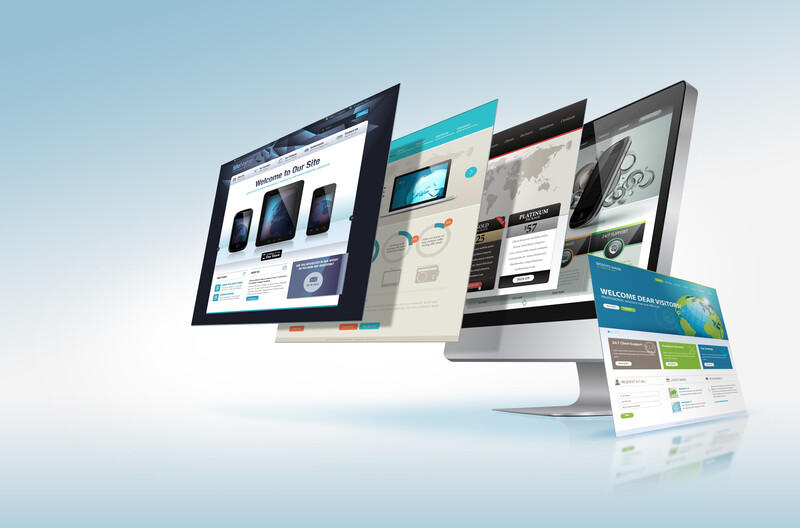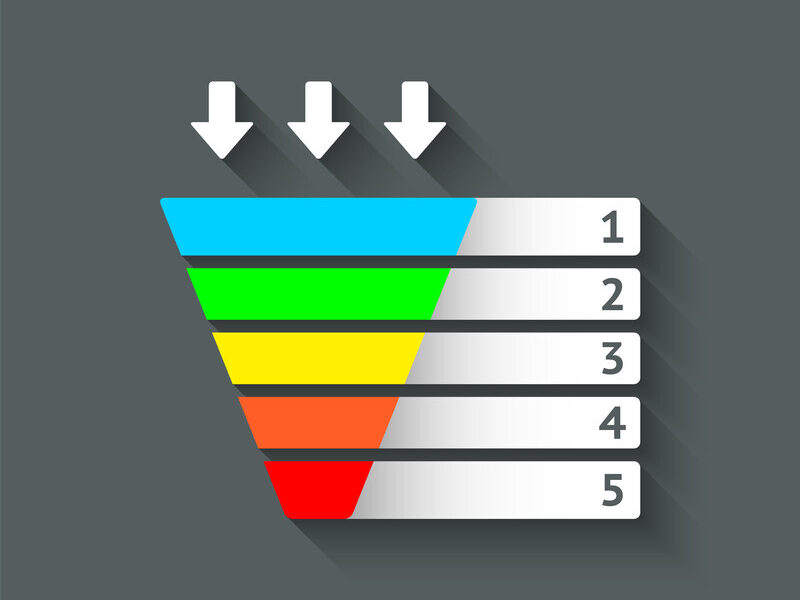In the world of business, entrepreneurs often come across the terms “sales funnel” and “marketing funnel.” While these two concepts may seem similar at first glance, they serve different purposes and play distinct roles in the overall success of a business. In this comprehensive article, we will dive deep into the sales funnel vs marketing funnel debate, exploring their differences, benefits, and how they can be used for your business.
1. Understanding the Sales Funnel and Marketing Funnel
1.1 What is a Sales Funnel?
A sales funnel is a systematic process that guides prospective customers from the initial stage of awareness about a product or service to the final stage of making a purchase. It consists of several steps, such as prospecting, lead generation, nurturing, and closing the sale. The main objective of a sales funnel is to convert leads into paying customers.
1.2 What is a Marketing Funnel?
On the other hand, a marketing funnel refers to the customer journey, starting from the moment they become aware of a brand to the point where they become a loyal, paying customer. The marketing funnel is primarily concerned with generating brand awareness, building relationships with potential customers, and eventually converting them into buyers through various marketing strategies.
2. Difference Between Marketing and Sales Funnel
The primary difference between a sales funnel and a marketing funnel lies in their focus and goals. A sales funnel is designed to convert leads into customers, while a marketing funnel aims to create brand awareness and build relationships with potential customers.
2.1 Focus and Goals
While the sales funnel focuses on generating revenue through converting leads into customers, the marketing funnel puts more emphasis on creating brand recognition and customer loyalty. The sales funnel is more concerned with closing deals and driving bottom-of-the-funnel activity, whereas the marketing funnel focuses on top-of-the-funnel activities such as generating awareness and interest.
2.2 Stages and Processes
A sales funnel typically has several stages, including prospecting, lead generation, nurturing, and closing the sale. Each stage plays a crucial role in converting a lead into a paying customer. On the other hand, a marketing funnel involves various activities such as creating content, conducting market research, running promotional campaigns, and generating leads to attract new customers and retain existing ones.
3. Benefits of Using a Sales Funnel vs Marketing Funnel
Both sales and marketing funnels have their unique advantages that can be leveraged to achieve different business goals.
3.1 Benefits of a Sales Funnel
- Sales funnels are excellent for generating leads and nurturing them until they are ready to buy.
- They enable businesses to target their marketing efforts more effectively, resulting in a higher conversion rate.
- Sales funnels allow businesses to track and measure the success of their sales efforts, providing valuable insights to optimize their strategies.
3.2 Benefits of a Marketing Funnel
- Marketing funnels help businesses build brand awareness and create customer loyalty.
- They allow businesses to establish relationships with potential customers, increasing the likelihood of converting them into buyers.
- Marketing funnels enable businesses to track and measure the effectiveness of their marketing efforts, providing valuable insights to optimize their strategies.
4. Pitfalls of Using a Sales Funnel vs Marketing Funnel
While both types of funnels offer significant benefits, they also come with certain challenges and potential pitfalls.
4.1 Pitfalls of a Sales Funnel
- Sales funnels can be complex and time-consuming to set up and manage.
- They may require intensive tracking and reporting to measure results and optimize performance.
- Sales funnels can sometimes be overly aggressive, potentially alienating potential customers.
4.2 Pitfalls of a Marketing Funnel
- Marketing funnels may not generate as many qualified leads as a sales funnel, leading to lower conversion rates.
- They may require more resources and effort to create and maintain compared to a sales funnel.
- Marketing funnels can sometimes focus too much on awareness and relationship-building, neglecting the need for direct sales efforts.
5. When to Use a Sales Funnel instead of a Marketing Funnel
The choice between a sales funnel and a marketing funnel largely depends on the specific goals and objectives of your business.
5.1 When to Use a Sales Funnel
A sales funnel is ideal for businesses that already have a customer base and are looking to increase revenue from existing customers. It is also suitable for businesses that need to generate quick results, such as startups or companies in highly competitive industries.
5.2 When to Use a Marketing Funnel
A marketing funnel is more appropriate for businesses that need to build up their customer base from scratch or focus on creating long-term customer loyalty. It is also suitable for businesses that want to establish a strong brand identity and position themselves as industry leaders.
6. Creating Effective Sales and Marketing Funnels
To make the most of your sales and marketing funnels, it is essential to create a well-planned and optimized strategy.
6.1 How to Create a Sales Funnel
- Identify your target audience: Determine who your ideal customers are and what their needs and preferences are.
- Create a unique offer: Develop a product or service that appeals to your target audience and addresses their needs.
- Build interest: Use various marketing channels and strategies to generate interest in your offer.
- Nurture leads: Provide valuable content and support to guide your leads through the sales process.
- Close the sale: Use persuasive sales techniques and create a sense of urgency to encourage leads to make a purchase.
6.2 How to Create a Marketing Funnel
- Generate brand awareness: Use a variety of marketing channels to reach out to potential customers and make them aware of your brand.
- Engage potential customers: Create valuable and engaging content to build relationships with your target audience.
- Nurture leads: Provide ongoing support and resources to help your leads make informed purchasing decisions.
- Convert leads into customers: Use targeted marketing strategies and persuasive sales techniques to convert leads into buyers.
- Retain customers: Offer exceptional customer service and ongoing support to encourage repeat business and referrals.
7. Essential Software for Sales and Marketing Funnels
Different software tools are needed to manage and optimize both types of funnels effectively.
7.1 Sales Funnel Software
- CRM (Customer Relationship Management): Tools such as Salesforce, HubSpot, and Zoho help manage customer information, track interactions, and automate sales processes.
- CMS (Content Management System): Platforms like WordPress, Shopify, and Wix enable businesses to create, manage, and optimize their website content.
7.2 Marketing Funnel Software
- CTA (Call to Action) Tool: Software like OptinMonster, Sumo, and ConvertFlow helps create and manage CTA buttons and forms to generate leads.
- Email Marketing: Platforms like MailChimp, ConvertKit, and Constant Contact allow businesses to create and manage email campaigns, automate follow-ups, and segment audiences.
8. Case Study: A Small Handmade Business Example
Let’s consider a small handmade business that specializes in creating customized jewelry. The business owner wants to use both sales and marketing funnels to grow their business.
8.1 Sales Funnel Approach
The business owner starts by identifying their target audience and creating an enticing offer – customizable jewelry pieces. They use various marketing channels to generate interest in their offer and then nurture the leads by providing valuable content and support. Finally, they close the sale using persuasive sales techniques and creating a sense of urgency.
8.2 Marketing Funnel Approach
The business owner focuses on generating brand awareness through content creation, market research, promotional campaigns, and lead generation. They engage potential customers by offering valuable and engaging content, nurturing leads with ongoing support and resources, and eventually converting them into buyers using targeted marketing strategies and persuasive sales techniques.
By leveraging both sales and marketing funnels, the business owner can effectively attract new customers, build lasting relationships, and boost their revenue.
9. Final Thoughts
In conclusion, understanding the difference between a sales funnel and marketing funnel is crucial for any business owner or marketer. While both funnels serve essential purposes, they have distinct roles in driving business growth. A well-designed sales funnel can help convert leads into customers, while a marketing funnel focuses on building brand awareness and customer loyalty.
By carefully considering your business goals, you can determine which funnel is the right fit for your needs and develop a comprehensive strategy that leverages the benefits of both. With a clear understanding of the sales funnel vs marketing funnel debate, you can make informed decisions for your business.





